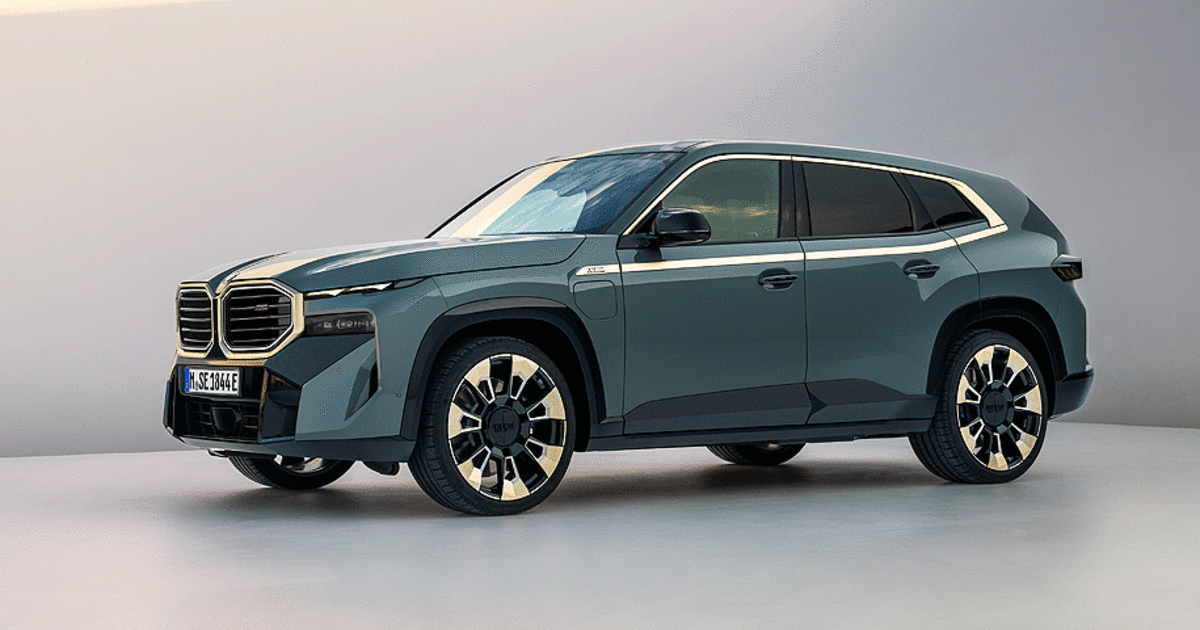
BMW’s lineup is getting a new high-powered halo model for an electrified age.
The XM plug-in hybrid SUV is the first standalone vehicle from the M performance brand since the BMW M1 launched five decades ago.
It will be assembled at BMW‘s U.S. factory in South Carolina, with deliveries beginning early next year. Pricing starts at $159,995, including shipping.
The new model arrives as the German performance marque steps up its electrification game.
AutoPacific President Ed Kim describes the XM as a “transition model” that shows M brand customers that electrified performance is the future.
“M is a brand for hardcore performance enthusiasts, the kinds that have petrol running through their veins,” Kim said.
But BMW is looking beyond gearhead customers with the XM.
The SUV is “a pinnacle of expressive luxury,” says Franciscus van Meel, CEO of the M brand.
“We are really addressing target groups that we didn’t address within BMW and M,” van Meel said at a press event late last year.
The XM introduces BMW’s newly developed M Hybrid drive system that packages high-octane power in a light carbon footprint.
A 4.4-liter TwinPower turbo V-8 engine with an electric motor pumps out a combined 644 hp and propels the three-ton beast from 0 to 60 mph in 4.1 seconds.
“You have the punch of the EV engine, which is the maximum torque from a standstill, combined with the V-8 engine, which is quite responsive,” van Meel said. “This is the best of two worlds and is a nice combination for a high-performance car because it gives you performance under all circumstances.”
When not drag racing down the freeway, the XM can deliver an estimated 30 miles of zero-emission driving on a single charge.
But the XM is an acknowledgment that inadequate charging infrastructure in the U.S. limits the practicality of all-electric vehicles.
“We still have a big demand for V-8 engines,” van Meel said. “We don’t want to shut that off on short notice.”
BMW, however, might be overestimating the reluctance of M customers to go fully electric.
“The highest performance vehicles in the marketplace today are fully electric already, so giving M customers a stopgap PHEV model to help wean them away from gasoline engines may be overkill,” Kim said. “It is entirely possible, perhaps even likely, that M customers would embrace an ultrahigh-performance electric SUV with all the razor-sharp handling and steering that M vehicles are known for.”
The coupe-like XM delivers a spin on BMW’s new front-end design.
The headlights are split into two modules, with the daytime driving light in the slim upper module. The low-beam and high-beam headlights are in the lower module, mounted behind tinted glass.
The beefy kidney-shaped grille sits between the headlights and tapers toward the outer edges, producing a near-octagonal outline. M-style double bars within the grille add to the perception of width.
Contour lighting sets off the grille to make the daytime driving lights recognizable. The new XM logo in the kidney grille and large air intakes are a visual reminder of the V-8 under the hood.
In the rear, slim L-shaped lights extend almost the vehicle’s width. The lights are completely black when not active and reveal a uniform beam of red when switched on.
Dominating the rear apron are the characteristic twin tailpipes of BMW M models in a vertical arrangement.
“This enabled us to go wider with the rear diffuser so that we could improve our aerodynamics,” van Meel said.
In homage to the M1, the rear window features dual laser-etched BMW roundels.
The XM features lounge-like rear bench seats, black-tinted rear side windows for privacy and deep pile carpeting. Optional seat heating includes the side panels and backrests.
“The feedback from our customers is that they really love our cars,” van Meel said. “But in the future, they would wish to have also more luxury in their cars.”
The visual highlight of the cabin is the headliner with its three-dimensional prism structure. Fiber-optic light guides containing 100 LEDs are integrated into the headliner’s “picture frame” border to produce a relief-like structure.
In-cabin lighting isn’t just decorative — it can pulse to signal an incoming phone call or highlight the risk of a potential collision when opening a door, the company said.
BMW’s signature curved display, stitching together a 12.3-inch instrument cluster and 14.9-inch infotainment screen, sits atop a decorative surface in matte carbon fiber.
The XM offers all the technology bells and whistles worthy of a six-figure halo vehicle.